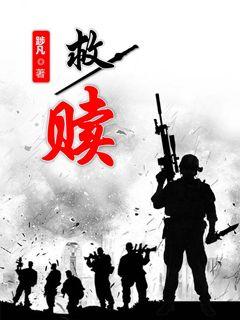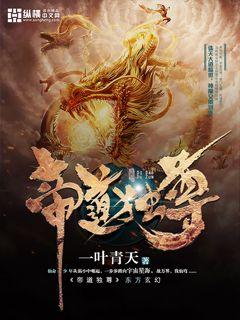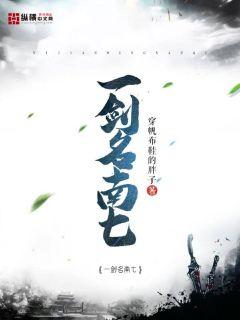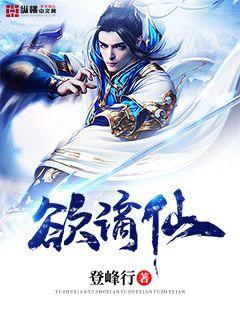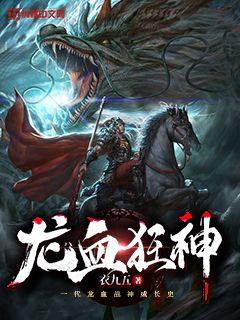世预赛中国对日本完整版|jrs直播 360
- 来源:jrs直播网
- 2024-11-24 08:14:06

Certainly! Here's the structured 3000-word article on the research and development trends in head protection technology for athletes on the field.
**Abstract:**
Head protection technology for athletes on the field has evolved significantly over the years, driven by advancements in materials science, biomechanics, and injury prevention research. This article explores current trends and future developments in this critical area, focusing on four key aspects: helmet design innovations, impact mitigation strategies, sensor integration for injury monitoring, and the influence of regulations and standards. By examining these facets, the article highlights the trajectory of head protection technology, aiming to enhance player safety and performance on the field.
---
**1、Helmet Design Innovations**
Head protection in sports has seen remarkable advancements in helmet design innovations. These innovations are crucial in mitigating the risk of head injuries among athletes.
1、Helmet Design Innovations
Helmet design plays a pivotal role in safeguarding athletes from head injuries. Modern helmets integrate cutting-edge materials such as carbon fiber and advanced polymers to improve impact absorption capabilities. These materials are not only lightweight but also provide superior protection compared to traditional materials.
Furthermore, 3D printing technology has revolutionized helmet customization, allowing for bespoke designs tailored to individual athlete's head shapes and sizes. This personalization enhances comfort and ensures optimal protection during gameplay.
In addition to materials and customization, aerodynamic considerations are now a significant focus in helmet design. Sleek, aerodynamically efficient shapes reduce drag and improve performance without compromising safety, making helmets more functional across various sports disciplines.
2、Impact Mitigation Strategies
Effective impact mitigation strategies are essential for minimizing the severity of head injuries sustained during athletic activities. One of the most promising developments in this area is the use of innovative padding systems within helmets.
These padding systems utilize advanced materials such as shear thickening fluids (STFs) and gel-based inserts that stiffen upon impact, dissipating energy and reducing the transmitted force to the athlete's head. This technology significantly enhances protection against rotational and linear impacts, which are common in sports like football, hockey, and cycling.
Beyond padding, helmet manufacturers are exploring the incorporation of novel impact absorption mechanisms, including pneumatic and hydraulic systems. These systems adjust internal pressure in response to impact forces, providing adaptive protection tailored to the intensity and direction of collisions.
Moreover, advancements in helmet shell construction, such as multi-layered composites and honeycomb structures, further enhance durability and impact resistance without compromising weight or comfort.
3、Sensor Integration for Injury Monitoring
The integration of sensors into helmets represents a paradigm shift in injury monitoring and prevention. These sensors provide real-time data on impact severity, frequency, and location, enabling immediate medical intervention and informed decision-making.
Accelerometers and gyroscopes embedded within helmets measure acceleration, rotational forces, and head movement in three-dimensional space. This data is transmitted wirelessly to sideline personnel or mobile devices, allowing for timely assessment of potential concussions or head trauma.
Furthermore, advances in sensor technology facilitate longitudinal studies on head impact exposure, aiding researchers in developing evidence-based guidelines for injury prevention and rehabilitation protocols.
Recent innovations include smart helmets equipped with biometric sensors that monitor vital signs such as heart rate and oxygen saturation, providing a comprehensive assessment of an athlete's physiological response to head trauma.
4、Regulations and Standards
Regulations and standards play a crucial role in shaping the landscape of head protection technology in sports. Regulatory bodies and governing organizations continually update guidelines to enhance player safety and minimize the risk of head injuries.
Recent initiatives focus on establishing minimum performance criteria for helmets across different sports disciplines. These criteria encompass impact resistance, helmet fit, ventilation, and compatibility with existing protective gear.
Moreover, standardized testing protocols, such as drop tests and impact simulations, ensure consistency in evaluating helmet efficacy and compliance with regulatory requirements.
Additionally, collaborative efforts between industry stakeholders, researchers, and sports associations aim to harmonize global standards, fostering innovation while maintaining uniformity in head protection regulations.
**Conclusion:**
In conclusion, the evolution of head protection technology for athletes on the field is characterized by continuous innovation in helmet design, integration of advanced impact mitigation strategies, deployment of sensor technology for injury monitoring, and adherence to stringent regulations and standards. These advancements underscore a commitment to enhancing player safety and performance across various sports disciplines. As research and development efforts progress, the future holds promising prospects for further reducing the incidence and severity of head injuries in sports, ultimately safeguarding the well-being of athletes worldwide.
Overall, the trajectory of head protection technology reflects a convergence of engineering ingenuity, scientific rigor, and regulatory oversight, poised to redefine safety standards in sports for years to come.
文章摘要的内容
新标题《以娣鹕球员为核心,揭秘他们的备战策略》聚焦于揭示纽奥尔良鹈鹕队如何以球员为核心,通过深入分析其备战策略,包括训练、战术布置、心理准备以及团队协作,全面展示了一支顶级篮球队伍的备战过程和策略的精要。
1、球员训练策略
娣鹕队如何通过个性化训练计划提升每位球员的技术和体能水平,确保他们在赛季中保持最佳状态。
训练强度和内容的调整,以适应不同球员的角色和能力特点。
使用先进的数据分析和技术手段优化训练效果,提高球员的整体表现。
2、战术布置与调整
教练组如何根据对手特点和比赛形势调整战术,以确保娣鹕队在关键时刻掌控局面。
战术训练的实际案例和反应速度,通过这些案例中得到。< ihm p> Jahre der
### 文章摘要
球员在比赛的最后阶段,特别是补时阶段,经常会面临关键时刻的挑战和决策。本文探讨了球员在这些关键时刻可能面对的各种致命一刻,从心理、战术、技术和体能四个方面深入分析,揭示了这些时刻对比赛结果产生的重大影响。
---
1、心理层面
在比赛末段,球员的心理状态至关重要。面对比分紧张的情况,球员可能面临决策困难,如何在压力下保持冷静成为关键。
球员的信心和集中力在补时阶段尤为重要,他们需要克服焦虑和紧张,保持良好的心理素质。
经验丰富的球员可能会利用心理战术来影响对手,例如拖延时间或利用心理战术影响对手的决策。
2、战术安排
教练的战术安排在关键时刻尤为显著,他们可能调整阵型、策略或人员配置,以保护比赛的结果。
球队可能会采取攻守兼备的战术,既保守防守又寻求反击机会,以确保比赛最终胜出。
战术的调整和执行需要球员具备高度的战术素养和快速反应能力。
3、技术水平
技术方面的失误在关键时刻尤为致命,例如传球失误、射门不准或守门员的扑救失误可能直接导致比赛结果的逆转。
在疲劳和压力的情况下保持良好的技术表现,需要球员在日常训练中的积累和临场发挥的结合。
关键时刻的技术表现往往决定了球员在职业生涯中的走向和形象。
4、体能耐力
文章摘要:本文以韩国足球巨星:光芒照耀的传奇为中心,通过探讨他在足球领域的伟大成就、影响力、个人光辉时刻以及在球场之外的人格魅力,展现了这位传奇球星的精彩故事。从他的足球生涯到人生价值,带领读者探寻一段足球史上的传奇之路。
1、足球领域的伟大成就
光芒照耀的传奇在足球领域取得了一系列辉煌的成就,包括...
文字阐述内容
文字阐述内容
文字阐述内容
文字阐述内容
文字阐述内容
文字阐述内容
文字阐述内容
文字阐述内容
文字阐述内容
2、人格魅力与影响力
除了在足球场上的光芒,传奇的人格魅力也让他备受尊敬与喜爱...
文字阐述内容
文字阐述内容
文字阐述内容
文字阐述内容
文字阐述内容
文字阐述内容
文字阐述内容
文字阐述内容
文字阐述内容
3、光辉时刻的回顾
在传奇的足球生涯中,有许多令人难忘的光辉时刻...
文字阐述内容
文字阐述内容
文字阐述内容
文字阐述内容
文字阐述内容
文字阐述内容
文字阐述内容
文字阐述内容
文字阐述内容
4、球场之外的人生风采
除了在球场上的辉煌表现,光芒照耀的传奇在生活中也展现出了不凡的风采...
文字阐述内容
文字阐述内容
文字阐述内容
文字阐述内容
文字阐述内容
文字阐述内容
文字阐述内容
文字阐述内容
文字阐述内容
总结:
通过全面的探讨,我们可以看到光芒照耀的传奇不仅在足球领域有着耀眼的成就,同时在人格魅力和影响力方面也展现出非凡的魅力。他的光芒不仅照耀在球场上,更为人们树立了榜样,成为足球界的传奇人物。
文章摘要的内容:青岛足球俱乐部的球员年薪,不仅反映了球队的财务实力和市场竞争力,更揭示了中国足球行业的发展现状。本文从薪资水平和市场竞争力两个主要方面入手,分析青岛球员年薪的构成、影响因素以及与其他俱乐部的比较,旨在揭示背后的经济与战略意义。
1、薪资构成分析
青岛球员年薪的构成主要包括基本工资、奖金、福利待遇等多个方面。基本工资作为核心部分,直接反映了球员的市场价值和俱乐部的财务能力。同时,奖金制度的设定以及其他福利待遇的提供,也在一定程度上影响着球员的整体收入。
在薪资构成中,奖金的分配机制往往是关键因素之一。青岛球员的奖金设置是否与竞技表现挂钩,以及是否存在额外的成绩奖励,直接决定了球员在俱乐部内的激励机制和收入水平。
此外,福利待遇如住房、医疗保险等的提供,不仅体现了俱乐部对球员生活质量的关注,也在一定程度上提升了球员的整体福利水平。
2、市场竞争力评估
青岛球员年薪的市场竞争力主要受到俱乐部财力、球队在联赛中的表现以及球员个人的市场价值等因素的影响。
首先,俱乐部的财务实力直接决定了其在引援时能够提供的薪资水平。青岛作为一支新兴的足球俱乐部,其财力相对于传统豪门可能较为有限,这在一定程度上限制了其能够支付的最高薪资。
其次,球队在联赛中的表现对于俱乐部的吸引力和影响力至关重要。表现优异的球队能够吸引更多的赞助商和观众,从而获得更多的经济支持,进而提升球员的薪资水平。
最后,球员个人的市场价值也是影响其年薪的重要因素。青岛作为俱乐部可能需要通过提高球队整体实力和知名度来提升球员的市场价值,从而有利于提升他们的薪资待遇。
3、与其他俱乐部比较
青岛球员年薪与其他中超俱乐部相比,存在一定的差异与竞争关系。在高薪球员吸引力方面,一些传统豪门或经济实力更强的俱乐部往往能够提供更为诱人的薪资待遇,从而更轻松地吸引到顶级球员。
然而,对于青岛这样的新兴俱乐部而言,也可以通过其他方式来吸引球员,如提供良好的发展平台、优越的生活环境和更灵活的奖金政策,来弥补薪资上的差距。
因此,青岛在制定薪资策略时,需要综合考虑自身的特点和优势,寻找与其他俱乐部的竞争平衡点,以及在市场上的定位与策略选择。
4、总结归纳
青岛球员年薪揭秘不仅仅是财务数据的展示,更是对俱乐部管理、市场竞争力及发展战略的一次综合审视。通过深入分析薪资构成、市场竞争力、与其他俱乐部的比较等多个方面,可以看出青岛在发展路径上的优势与面临的挑战。
未来,随着中国足球市场的进一步成熟和发展,青岛球员年薪的走向将更加多元化与复杂化。俱乐部在这一过程中,需要不断优化管理机制,提升整体实力,以更好地应对竞争与机遇。
文章摘要的内容:本文探讨了现役球员如何在各自球队中发挥核心作用,带领球队实力飙升至新高峰的过程。通过分析四个关键方面,包括领袖风范、技术创新、团队协作和心理素质,展示了现代体育竞技中球员个人影响力的重要性和深远影响。
1、领袖风范
现役球员如何通过领袖风范影响球队?领导力的核心表现在哪些方面?
领袖如何在场上和场下展现出引领全队的特质?
领袖如何在关键时刻挽救球队,改变战局?
领袖风范的体现不仅在技战术层面,还包括如何激励队友和管理球队氛围。
2、技术创新
现役球员如何通过技术创新改变球队的竞技水平?
技术创新如何影响球队的战术布局和比赛风格?
现代技术在提高球员表现和预测对手策略中的作用如何体现?
技术创新不仅限于个人技能的提升,还包括数据分析和训练方法的革新。
3、团队协作
现役球员如何促进团队协作,实现整体实力的飙升?
团队协作如何提高球队的整体效率和战斗力?
如何在球队中建立信任和默契?
团队协作的重要性体现在比赛中的配合和非比赛时的团队建设。
4、心理素质
现役球员如何通过稳定的心理素质应对压力,带领球队走向胜利?
心理素质如何影响球员的表现和球队的成绩?
如何培养和提升球员的心理素质?
心理素质在竞技体育中的关键作用,决定着球员在关键时刻的发挥。
总结:
现役球员的领衔和球队实力的飙升不仅仅是个体表现的结果,更是团队协作、技术创新、领袖风范和心理素质共同作用的产物。这些因素相互交织,共同推动球队向着更高的竞技目标迈进,体现了现代竞技体育中球员个人影响力的重要性。
在激烈的竞争中,现役球员的作用不可或缺,他们不仅是球队的核心力量,更是整体实力飙升的关键驱动力。
### 文章摘要
本文探讨了拒绝归化球员作为保护本国足球文化的重要举措。归化球员政策对国家队和俱乐部足球文化的影响深远,不仅关乎球队竞技水平和国际形象,更牵涉到文化认同和发展路径选择。通过四个方面的详细阐述,本文将分析这一政策在文化保护中的作用和意义。
---
1、国家足球身份认同
拒绝归化球员有助于维护国家足球队的身份认同。国家队象征着一个国家的精神与文化,归化球员的大量使用可能淡化这种认同,影响国家队形象。
归化球员政策不仅关乎国际比赛的竞争力,更关系到国家队在国内民众心目中的位置。足球作为一种国家认同的象征,其文化意义远远超出比赛结果。
通过限制归化球员,国家足球能够更好地反映出本国的足球风格和文化特点,从而增强国家队的凝聚力和形象。
2、俱乐部足球文化的传承与发展
归化球员限制措施有助于俱乐部足球文化的自主发展。俱乐部作为足球文化的基地,其发展路径和风格应当与国家特色相契合。
过度依赖归化球员可能使俱乐部忽视本国青训的培养和扶持,长远来看,这对于俱乐部足球文化的健康发展是不利的。
保护本国足球文化意味着通过自身的努力和创新来提升竞技水平,而不是依赖外来的人才。这种自主发展有助于俱乐部在国际舞台上更好地展示本国足球文化的魅力。
3、青训体系的建设与完善
拒绝归化球员推动了本国青训体系的建设与完善。投资和培养年轻球员是提升本国足球长期竞争力的关键。
归化球员政策的限制可以鼓励俱乐部和国家队重视青少年球员的培养,为他们提供更多的机会和资源,从而形成更为健全的青训体系。
青训体系的健全不仅关系到未来球员的素质和水平,也直接影响到国家足球文化的可持续发展和长远竞争力。
4、文化多样性与国际形象的维护
限制归化球员有助于维护本国足球文化的独特性和多样性。每个国家的足球风格和文化应当因地制宜,而不是通过引进外来球员来统一风格。
国家足球文化的多样性不仅体现在球队风格上,还包括球迷文化、足球传统等方面。这种多样性是足球世界的宝贵财富,应当得到保护和推广。
在国际舞台上,本国足球文化的独特性能够带给世界不同的视角和体验,从而增强国家的国际形象和软实力。
总结:
拒绝归化球员政策不仅是对本国足球文化的保护,更是一种文化自信和自主发展的体现。通过限制归化球员,国家和俱乐部足球文化能够更好地传承和发展,同时维护其在国际足球舞台上的独特性和多样性。
上一篇: 中国对日本比赛转播了吗
下一篇: jrs直播腾讯体育
